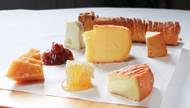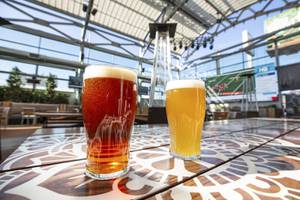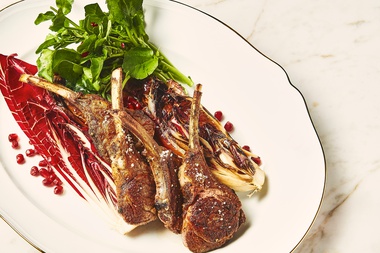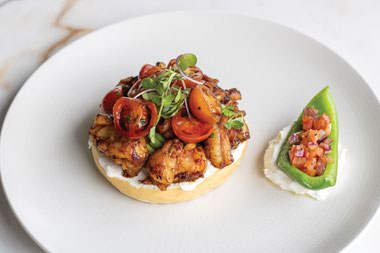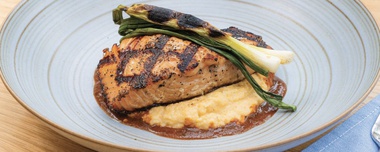There’s no debate that French varieties dominate the tastes of wine lovers across the U.S.—Chardonnay, Cabernet Sauvignon, Pinot Noir, Sauvignon Blanc. But Italian varieties have taken over in terms of imports, according to the Italian Wine & Food Institute. This could be mostly due to the boom in popularity of Moscato and Prosecco with millennials, but judging by the sellout crowd for a recent Taste & Learn event at local institution Ferraro’s, Italy—which has such a long wine-making tradition it was known as Oenotria (“the land of vines”) by ancient Greeks—might be having its moment.
“I can only speak for my restaurant,” says owner Gino Ferraro, “but we know we’ve come a long way. A lot of people don’t even look at the wine list, they just say ‘Gino, send me something you think goes well.’ They trust us.”
Giovanni Nencini certainly does. As managing director of importer Lux Wines, Nencini appeared at the August 22 event on behalf of the Allegrini label, pouring wines from Veneto, the largest wine-making region of Italy. “It’s family establishments like this around the world that have made Italian wine what it is,” Nencini says. That might sound like flattery, but an owner like Ferraro—who keeps a 16,000-bottle cellar of 1,200 labels, 85 percent Italian—buys wine as much with his heart as his head.
“When I like a wine personally, I buy a lot,” Ferraro says. “And I don’t think there’s anybody that buys more Piemonte than me.”
Italy can intimidate. The country lays claim to more than 70 percent of the world’s grape varieties, thousands including regional variations. And three of the most popular wines have tongue-trippingly similar names: Barolo, Barbera, Barbaresco. So before getting in too deep, for the uninitiated, we asked Ferraro for his five essential Italian wines.
Barolo From Piemonte, made from Nebbiolo grapes, and per D.O.C.G. regulations aged at least three years; typically offering aromas of violet and notes of plum, black cherry, truffle and chocolate. “The king of wines, and tends to age for decades on great vintages.” Pairs with white truffle risotto, hard cheeses and roasted meats.
Barbaresco Also Nebbiolo from Piemonte (though grown at higher altitudes); aged at least two years but compared to Barolo, more restrained; elegant, perfumey on the nose, spicy yet feminine. Pair with veal, game, turkey.
Brunello di Montalcino Made from a strain of Sangiovese grape in Tuscany; aged at least four years and defined by rich, deep-colored structure and power. Pair with red meat, rabbit or wild boar, mushrooms, aged pecorino or parmigiano reggiano.
Aglianico “The Barolo of the south,” Ferraro says; made in Campania and Basilicata from the grape of the same name, to different effects but with big, earthy, chocolatey, lightly fruity, high-acid qualities; built to age. “Incredible for steak and hearty sauces.”
Nerello Mascalese An underdog variety grown on the slopes of Mount Etna in Sicily, with notes of cherries, berries, plum, smoke and chocolate; more acidic than tannic. Like a brighter, crisper Nebbiolo. Pairs with grilled fish, eggplant, aged goat cheese and pasta alla Norma.
Of course, those are all reds. For white wine, Ferraro goes primarily to Friuli and Alto Adige. Neither was offered during the tasting with Nencini, who poured Vermentino, Valpolicella and Corvina based wines, but they are likely to be at the next event with Banfi Wines on September 26.
“We’ve done all the important wines of Italy [at these tastings],” Ferraro says. “We don’t make money on them. We just want to educate people.”

